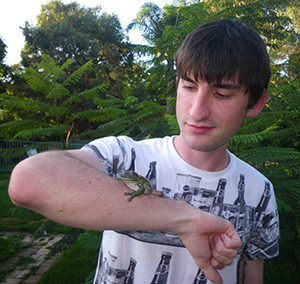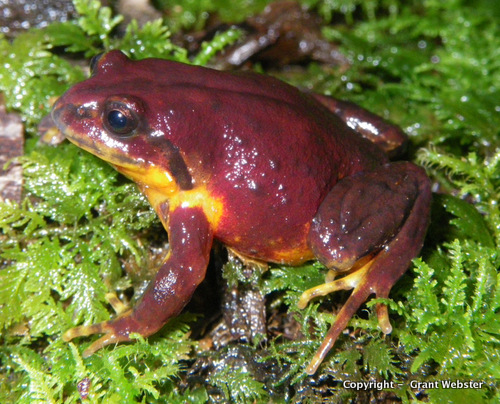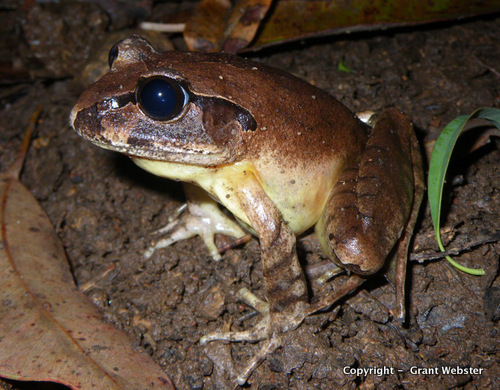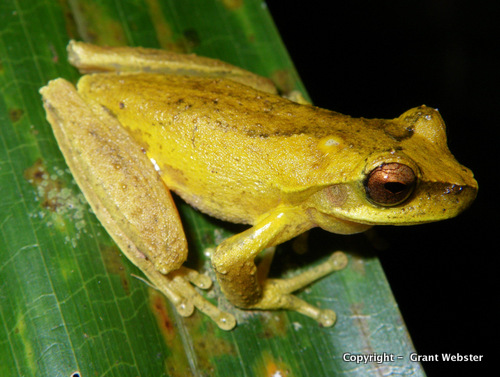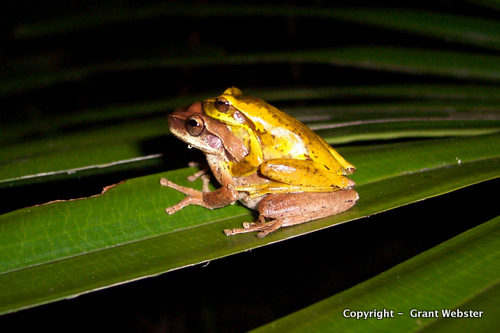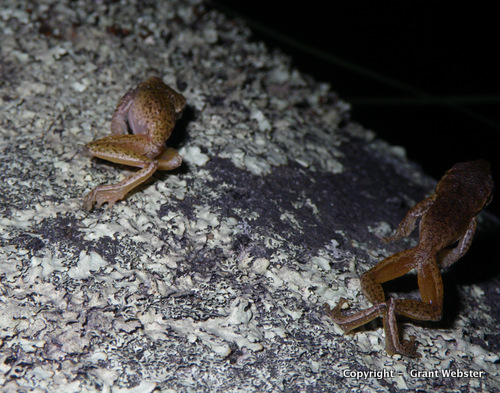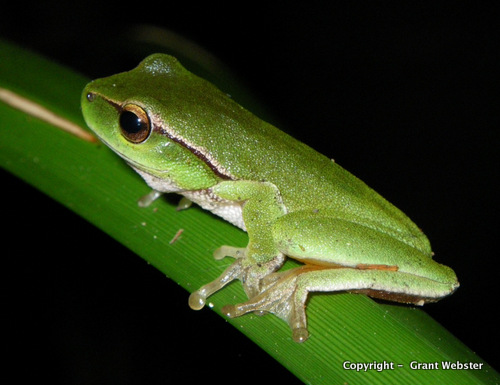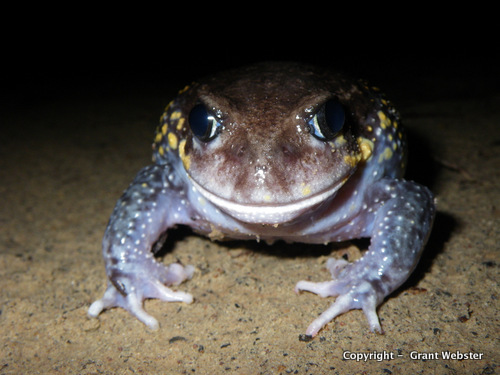Grant did his honours (described below) with Martin in 2014. He then took a year off and did a lot of frogging before returning to do his MRes in 2016. This project was on taxonomy and geographic variation in the Pseudophryne bibronii complex.
Dynamic (physiological) colour change in the context of sexual selection is almost unstudied in frogs. The whirring tree frog (Litoria revelata) is one of several Australian frogs which use colour during sexual advertisement. My honours project tested whether colour is indicative of male quality. To this end, I measured the colour of amplectant males (in Wallingat NP, NSW) before briefly moving the pair to a container where the female could lay her eggs. By quantifying hatching success and then the proportion of tadpoles that successfully metamorphose, I obtained a measure of reproductive fitness. I also tested for a correlation between their call and aspects of colour to establish whether the call signals different information or reinforces the same signal. Interestingly, males do not turn back to their basal colour after pairing up with the female, which is what we would predict if colour signals are conspicuous and costly. This is the case for the Costa Rican toad Bufo luetkenii (see Biol. Lett. (2010) 6, 63–66).
See a Lizard Lab blog posting and photos from my work.
Here are a selection of some of my photos:

